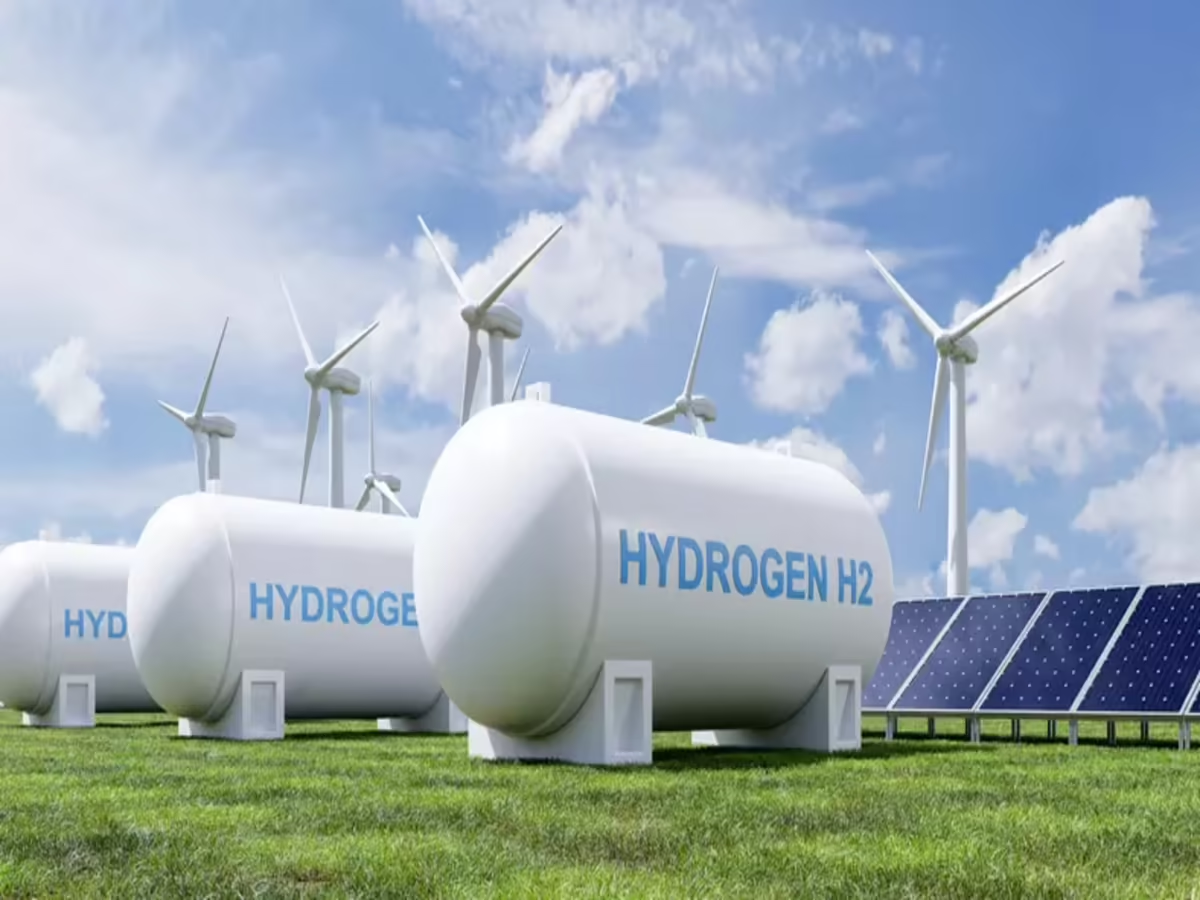- Courses
- GS Full Course 1 Year
- GS Full Course 2 Year
- GS Full Course 3 Year
- GS Full Course Till Selection
- Answer Alpha: Mains 2025 Mentorship
- MEP (Mains Enrichment Programme) Data, Facts
- Essay Target – 150+ Marks
- Online Program
- GS Recorded Course
- Polity
- Geography
- Economy
- Ancient, Medieval and Art & Culture AMAC
- Modern India, Post Independence & World History
- Environment
- Governance
- Science & Technology
- International Relations and Internal Security
- Disaster Management
- Ethics
- NCERT Current Affairs
- Indian Society and Social Issue
- NCERT- Science and Technology
- NCERT - Geography
- NCERT - Ancient History
- NCERT- World History
- NCERT Modern History
- CSAT
- 5 LAYERED ARJUNA Mentorship
- Public Administration Optional
- ABOUT US
- OUR TOPPERS
- TEST SERIES
- FREE STUDY MATERIAL
- VIDEOS
- CONTACT US
PLACES IN NEWS 1st FEBRUARY 2025
PLACES IN NEWS 1st FEBRUARY 2025
01-02-2025

Ajanta Caves
Why in news?
- A new field laboratory has been established at Ajanta Caves to enhance conservation efforts and scientific research.
- Equipped with modern technology, it will facilitate preservation studies, environmental monitoring, and restoration work.
About Ajanta Caves:
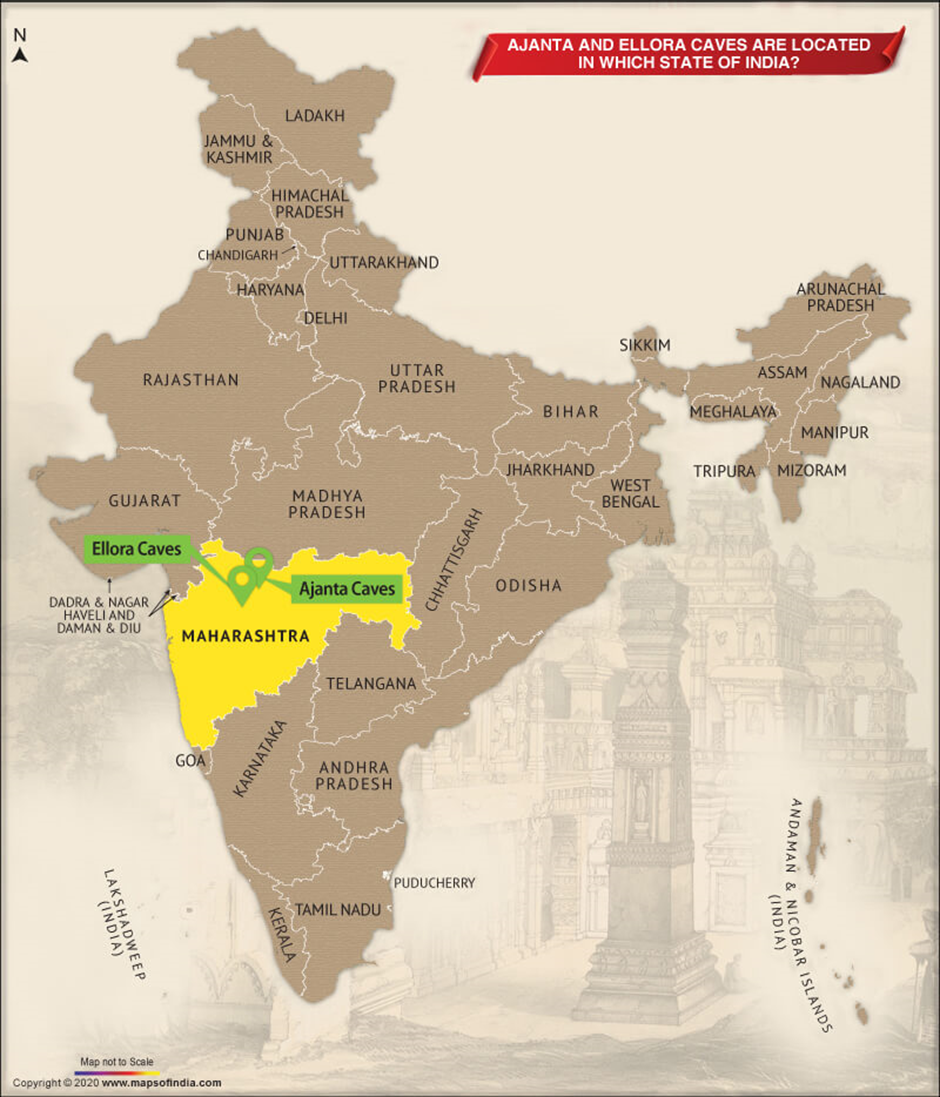
- The Ajanta Caves are located in the Sahyadri ranges of Maharashtra near the Waghora River near Aurangabad District.
- Developed between 200 B.C. and 650 A.D., they served as chaityas (prayer halls) and viharas (monasteries) for Buddhist monks. Out of 29 rock-cut caves, 4 were used as Chaitya caves while 25 were used as Viharas caves.
- The caves are renowned for their exquisite mural paintings, which adorn walls, pillars, and ceilings. These artworks, created using vegetable and mineral dyes, depict scenes from the Jataka tales, illustrating the Buddha's previous lives, as well as events from his life and various Buddhist legends.
- Among the most celebrated paintings is the Bodhisattva Padmapani in Cave 1. This mural portrays a serene figure holding a lotus, exemplifying the artistic sophistication of the period.
- The architectural design of the Ajanta Caves features a horseshoe-shaped layout along the Waghora River.
- The Chaitya halls are characterised by vaulted ceilings and an apsidal end, with facades dominated by horseshoe-shaped windows, known as chaitya windows.
- The Ajanta Caves were inscribed by Buddhist monks under the patronage of the Vakataka kings, with Harishena being a prominent patron.
- In recognition of their historical and cultural significance, the Ajanta Caves have been designated as a UNESCO World Heritage Site.
Kamakhya Temple
Why in news?
The Enforcement Directorate (ED) conducted raids at the residences of former officials of the Kamakhya Temple management in connection with an alleged ₹7.62 crore scam.
About Kamakhya Temple:
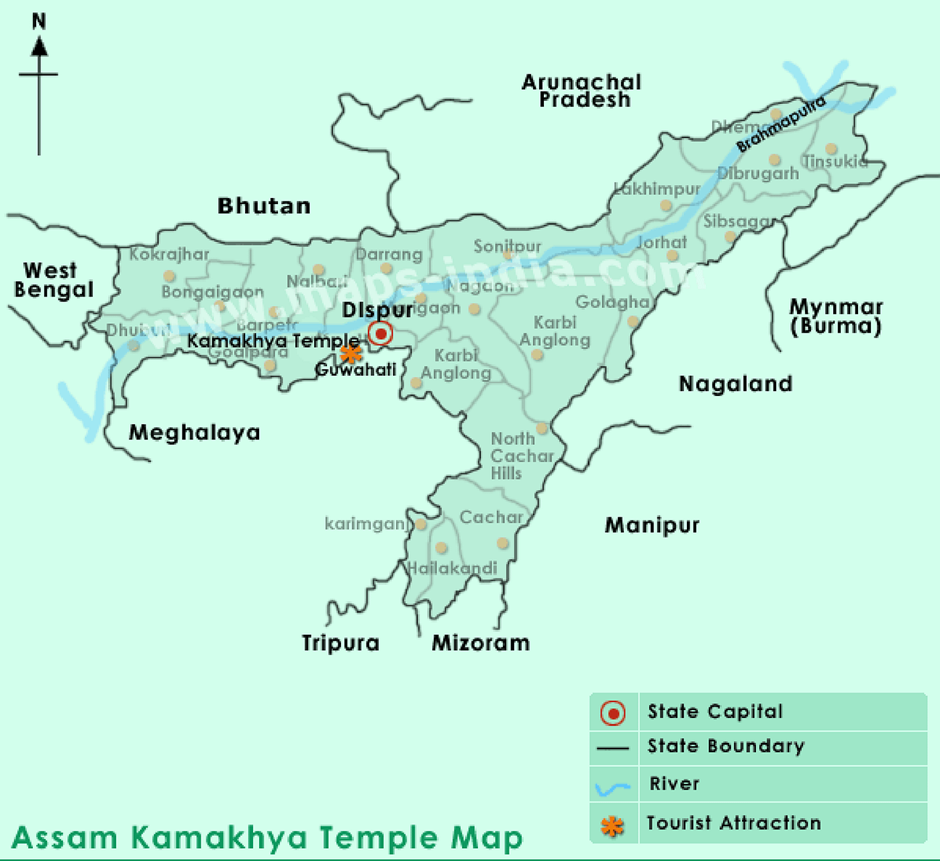
- Kamakhya Temple, a revered Shakti Peeth, is situated on the Nilachal Hill in Guwahati, Assam.
- It is one of the oldest and most significant centres of Tantric worship in India, situated along the Brahmaputra River.
- Built during the 8th-9th century during the rule of the Mlechchha dynasty, the temple underwent significant renovations under the Ahom kings in the 17th century.
- The temple complex consists of several shrines dedicated to different forms of Goddess Shakti, with Kamakhya Devi as the main deity.
- Unlike conventional temples, it houses a yoni-shaped stone, symbolising the goddess, which is worshipped as a representation of feminine energy.
- The temple is renowned for the annual Ambubachi Mela, held in June, which marks the menstruation cycle of Goddess Kamakhya.
- This festival, deeply rooted in Tantric traditions, attracts thousands of devotees, sadhus, and seekers from across India.
- Another major celebration is the Durga Puja, where grand rituals and offerings take place. The Manasha Puja, dedicated to the serpent goddess, is also observed with devotion.
- As a prominent Shakti Peeth, Kamakhya Temple holds immense cultural and religious significance. It is a major centre for mystical worship, attracting practitioners seeking divine blessings and occult knowledge.
Loktak Lake
Why in news?
- Manipur has strengthened conservation efforts for Loktak Lake, a critical ecological site, by implementing stricter rules and setting deadlines for preservation activities.
- The new regulations aim to combat pollution, protect biodiversity, and promote sustainable tourism, ensuring the lake's health and longevity while balancing local development needs.
About Loktak Lake:
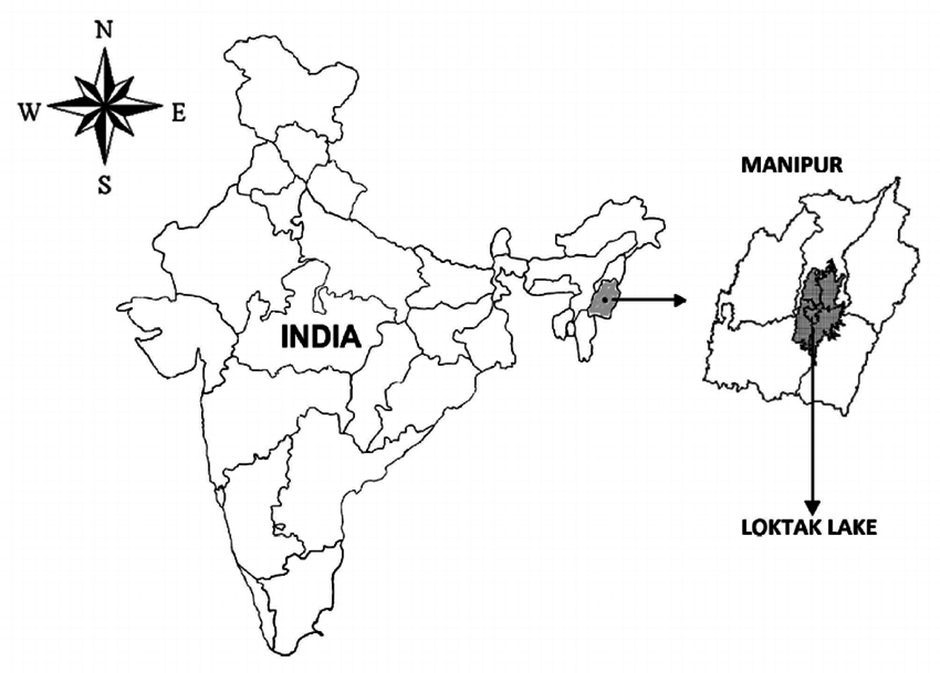
-
Location:
- Loktak Lake is located in the state of Manipur, in northeastern India, and is the largest freshwater lake in the region, spanning an area of over 300 square kilometres.
- It is situated at the foothills of the Manipur mountain range, near the capital city, Imphal. The lake is primarily fed by the Manipur River, which flows through the state and drains into the lake.
- Flora and Fauna:
- The lake is renowned for its unique floating islands called Phumdis, which are masses of vegetation, soil, and organic matter that float on the water's surface.
- These phumdis support a diverse range of plant and animal species and play a significant role in maintaining the ecological balance of the region.
- Flora in and around Loktak Lake includes aquatic plants like lotus, water lily, and various species of grass.
- The floating phumdis also support a variety of grasses, shrubs, and small trees, which serve as critical habitats for wildlife. The lake is surrounded by rich forested areas that contribute to the region's biodiversity.
- Loktak Lake is home to a diverse range of fauna, including numerous bird species, fish, and amphibians.
- It is a vital breeding ground for migratory birds, especially during winter. The lake is home to the endangered Sangai deer, which is found only in the Keibul Lamjao National Park, located within the lake.
- The area is also rich in fish species, making it an important resource for local fishing communities.
- Ecological significance:
- Ecologically, Loktak Lake plays a crucial role in regulating the local climate, maintaining water levels, and supporting agricultural activities through its water supply.
- The phumdis help in stabilising the water quality, providing natural filtration, and acting as a habitat for both flora and fauna. The lake's preservation is essential for the overall health of the region's ecosystem.
Kolleru Lake
Why in news?
The National Green Tribunal (NGT) has prohibited the Andhra Pradesh Government from proceeding with six infrastructure projects in the Kolleru Wetland, citing concerns over environmental degradation.
About Kolleru Lake:
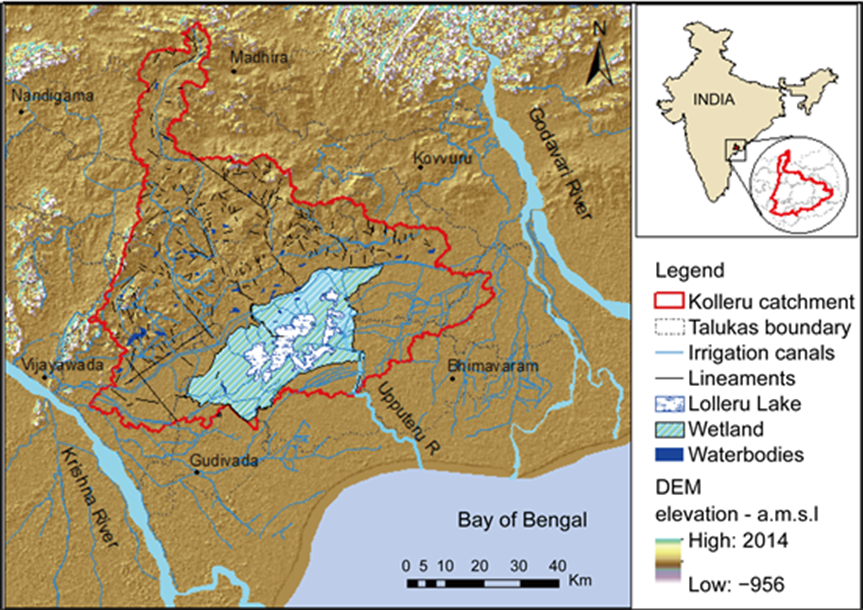
-
- Location:
- Location:
- Kolleru Lake, located in the Eluru district of Andhra Pradesh, is one of India's largest freshwater lakes and the largest shallow freshwater lake in Asia.
- Covering an area of 245 km² (with a total wetland area of 302 km²), it lies between the Krishna and Godavari river deltas, about 65 km from Rajamahendravaram and 15 km from Eluru.
- This geographical location makes it a vital resource for water management in the region, with water being supplied by the seasonal Budameru and Tammileru rivulets. The lake is also connected to extensive irrigation systems via over 67 canals.
- Ecological significance:
- Ecological significance:
- The lake holds great ecological significance, serving as a major habitat for both resident and migratory birds. It supports an estimated 20 million birds, including species like the Siberian crane, ibis, and painted storks.
- In November 1999, Kolleru was declared a wildlife sanctuary, and in 2002, it was recognised as a Ramsar wetland of international importance. The sanctuary spans 308 km², protecting numerous species.
- Kolleru also plays an important role in local fisheries, supporting communities such as the Vaddi community, who engage in cultured fish farming.
- Challenges faced by the lake:
- Challenges faced by the lake:
- However, the lake faces several challenges, primarily caused by human encroachment. The construction of fish tanks has transformed large sections of the lake into a drain, leading to severe pollution.
- These fish tanks, alongside agricultural encroachment, have significantly reduced the water area, with aquaculture occupying 42% of the lake in 2001.
- The rise in pollution has led to water quality deterioration, which affects both the health of the ecosystem and the availability of drinking water for nearby communities.
- The introduction of illegal bunds and water diversion has hindered the natural flow of water, causing flooding and damaging crops.
- Moreover, the presence of factories discharging waste into the lake has exacerbated pollution levels.
- The government initiated Operation Kolleru in 2006 to address these issues, though challenges remain. The threat of infrastructure projects near the lake adds to the growing concerns about its future, with environmentalists warning of further ecological degradation.
UPSC CSE PYQsQ1. Consider the following statements:
How many of the Statements given above are correct? (2023)
Answer: Option AQ2. Which one of the following statements is correct?
Answer: Option A Q3. Consider the following pairs:
Which of the above pairs is/are correctly matched?
Answer: Option A
|
|
Also Read |
|
| Public Administration Optional | |
| Question Answer Practice For UPSC | |

